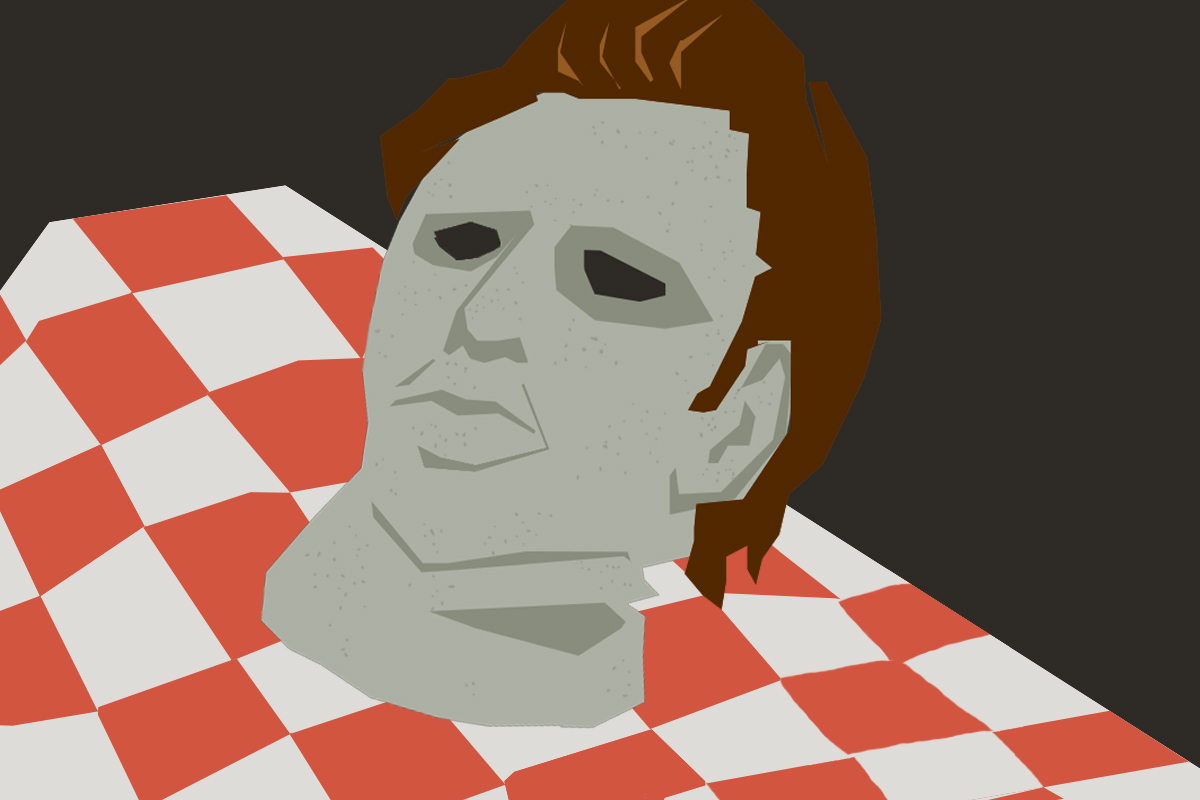
Horror movies love their tropes. If you have sex in a horror movie, you die. If you’re not white in a horror movie, you die. If someone says “hey gang, let’s split up” in a horror movie, chances are you’re all going to die, one by one. The only character who never dies is The Final Girl. The Final Girl is smart, bookish, shy, and above all else, virginal. She’s the person least expected to survive for her general uncoolness. But as quickly as she is cast to the sidelines she avenges herself, killing or otherwise disarming the Big Bad, at least until the sequel.
John Carpenter’s 1978 film “Halloween” gives us the Final Girl in Laurie Strode, played by Jamie Lee Curtis. We see Laurie mocked by her friends for having a crush on a boy, sheepishly take a hit of a blunt and promptly choke on the smoke, and take over the babysitting duties of her friends so they can skulk off and have sex. But when the murderous gaze of serial killer Michael Myers is finally cast upon her, Laurie is the one who defeats him. Well, sort of.
By the time Laurie encounters Michael Myers, he has already killed off all of her friends, picking them off slowly over the course of Halloween night. The first act of the movie focuses on Michael’s backstory. He had been living in a psychiatric institution for the past 15 years after brutally murdering his sister at age six in cold blood. We see him escape from the hospital, steal a police cruiser, and return to his hometown of Haddonfield, IL to kill again. He sees Laurie walk by as he peers through the slats in the window of his now-abandoned home, and, for whatever reason, he chooses her. We see him stalk Laurie, watching her in school and as she walks home with her friends. And after killing off all of her friends, he finally comes for her.
Laurie’s defeat of Michael Myers is messy. She wrestles the knife out of his hand only to drop it on the floor. She stabs him with a knitting needle, then later a coat hanger, all the while screaming and crying. She leaves the knife on the floor, again, it goes on. But Michael Myers still comes after her with a level of superhuman invincibility that is never explained. After Michael’s second fake death, Laurie crumples to the floor, crying. We see Michael stand up out of Laurie’s field of vision, advancing upon her, when suddenly a gun goes off. Dr. Loomis, Michael Myers psychiatrist who has taken it upon himself to find and disarm his former patient, is standing in front of Laurie with a gun.
Only then is Michael Myers defeated, stumbling backwards and over the balcony of the second floor, landing on the lawn below. It is Dr. Loomis who looks over the balcony at Michael Myers unmoving body, glances away, and then looks back again to see that it had vanished. He is the one who, in the end, saves the day. Meanwhile Laurie is still crying, unaware that the killer is even gone.
Jamie Lee Curtis reprised her role as Laurie Strode in the newest of the 11 films that comprise the “Halloween” cinematic universe. This 2018 sequel to the first film, also titled “Halloween,” shows a very different Laurie Strode. It’s been 40 years, and Laurie still suffers from severe trauma over her encounter with Michael Myers. The audience learns that Laurie has gone through two failed marriages, and her obsession with Michael Myers has distanced her relationship to her daughter Karen (Judy Greer) and granddaughter Allyson (Andi Matichak). Shots contrast from Laurie stoically assembling a rifle to her later breaking down in tears at the dinner table, much to the nervous embarrassment of her family.
The stately homes in the first “Halloween” are gone In this movie, Laurie’s home is a fortress with enormous flood lights illuminating the entire perimeter of her property, metal grates on every window, and a bunker below her kitchen. She is obsessed with Michael Myers. Convinced that one day he will return, she says she prays “every night that he would escape, so I can kill him.”
And Michael Myers, of course, escapes, running a transport bus off the road while being transferred from one psychiatric facility to another. He kills everyone in the bus, steals a car, and comes back to wreak havoc on Haddonfield once again. But this time, Laurie is waiting for him.
This new “Halloween” plays out many of the same tropes in the first movie. The rule “if you have sex, you die” still applies. Or, in this case, “if you plan to have sex, you will die.” Shockingly violent deaths abound, made even more graphic by the higher abundance of gore in modern-day horror. But there is one interesting twist. In this movie, there is no Final Girl. There are three.
In the inevitable showdown between Laurie and Michael Myers, three generations of Strode women are present: Laurie, Karen, and Allyson. By the third act of the film, all of the men are gone, murdered or otherwise made irrelevant. Laurie and Michael do fight one-on-one, but it is only through the collaboration between the three Strode women that Laurie is able to fight him with any chance of winning.
After the thrilling climax of 2018’s “Halloween,” all three Strode women sit together in the back of a police cruiser, holding each other in silence. The Laurie from the original “Halloween,” cowering and fumbling her way to survival, is gone. And in the very last shot, the camera pans and holds on Michael Myers’ bloody knife, gripped tightly in Allyson’s hand.
“Halloween” (2018) was released on October 19 and was directed by David Gordon Green.







